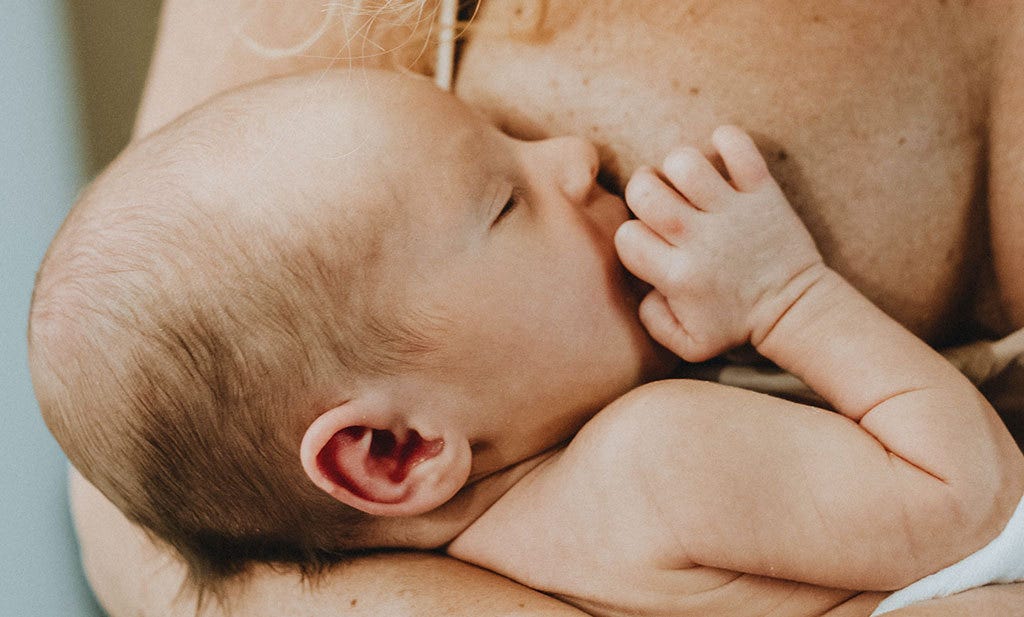
There is nothing better for mum and baby than breast/chest feeding. A well-functioning breast/chest feeding relationship is something wonderful. But what few people talk about is: inflamed nipples, milk retention and mastitis which can also cause a lot of pain for new mums. If left untreated (or treated too late), mastitis can even lead to abscesses. We don't want to scare you, we just want you to be aware and get to know your body better. This way you can prevent unpleasant complications of breastfeeding or recognise and treat them early on.

What is mastitis and how does it develop?
Mastitis usually occurs in the first three months of breast/chest feeding and is an inflammation of the mammary gland. It usually affects only one breast/chest and can be caused by obstruction of the milk flow (non-infectious) or by infection. Mild, non-infectious mastitis is sometimes also classified as milk stasis. In 95 per cent of infectious cases, the pathogen Staphylococcus aureus is responsible, however on the other hand, Bilateral mastitis, is often caused by streptococci and is dangerous for mother and child. Therefore, in such a case, a break from breastfeeding should be taken and seek immediate medical advice. Other causes of mastitis can be:
- Injured nipples
- Breast/chest feeding too infrequently, breastfeeding according to a schedule or skipped breastfeeding meals
- Improper latch-on or weak suckling, inadequate emptying
- Excessive milk supply
- Physical or psychological strain, stress (lack of milk-giving reflex), tiredness
- Rapid weaning

Milk engorgement and mastitis: How do I recognise that I have mastitis?
Milk engorgement is first noticed by a painful spot on the breast/chest that does not soften even with breast/chest feeding and is sensitive to touch. In mastitis, the area also becomes hot, red and sensitive to pain. This can be accompanied by flu-like symptoms such as alternating hot/cold sensations and joint pain or a body temperature above 38.4 degrees Celsius. In addition, the taste of the breast/chest milk changes - it becomes slightly salty, but this does not harm the baby. Mastitis often remains undetected for a long time, especially if it is deep in the breast tissue.

What can you do about milk stasis and mastitis?
If you recognise it in time, you can get milk stasis and mastitis under control with the help of your midwife or breast/chest feeding counsellor. Here is an overview of the most important recommendations:
- Be sure to talk to your midwife/breast/chest feeding counsellor (IBCLC) if you notice any changes in your breasts/chest. She can best assess what it is and show you the appropriate latch-on techniques to help you improve the discomfort.
- Empty your breast/chest regularly and effectively so that it doesn't get worse.
- If your baby is not drinking enough, it is advisable to pump.
- As a general rule, keep warm before breast/chest feeding and cool after breast/chest feeding.
- Before breast/chest feeding, place a warm flannel on the hardened area, or even a gentle breast massage while breast/chest feeding or pumping can often help to relieve milk engorgement and stimulate the flow of milk.
- The affected breast/chest should be given first and the baby's chin should point towards the hardening/inflammation for better emptying. Reason: The lower jaw has more "traction" when sucking and so the engorgement is released better.
- Since both milk stasis and mastitis are promoted by stress: keep bed rest, delegate housework and cancel unnecessary visits.
- After breast/chest feeding, cool the affected area, for example with cold flannels or cold packs from the fridge (not from the freezer).
- Roll out cooled white cabbage leaves (cut out hard stalk in the middle) with rolling pin until the juice comes out. Then place around the breast in the bra. This has an anti-inflammatory and cooling effect at the same time.
- Painkillers if needed - ibuprofen is preferable to paracetamol as it has an anti-inflammatory effect.

In any case, contact your doctor (if it does not get better after 24-48 hours) to get an antibiotic if necessary. The later treatment of mastitis begins, the greater the risk of an abscess. An ultrasound examination can provide clarification if needed.
Whether it's milk stasis, mastitis or abscess - please don't blame yourself if there are complications with breast/chest feeding. For many women, mastitis is a reason to stop breast/chest feeding.
However, from a medical point of view, this is not necessary - not even in the case of an abscess - even if it requires antibiotics or an operation under general anaesthetic. The benefits for your baby from breast milk outweigh the risks. However, as this is your body we are talking about, and the risk of recurrent mastitis is of course always there, you must make the right decision for yourself and your baby.
Source: Midwifery, Thieme, 6th edition 2020.





















